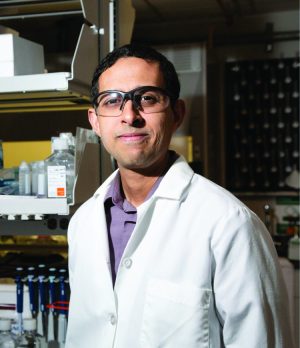UH Professor’s Covid-19 Nasal Vaccine

Navin Varadarajan, M.D. Anderson Professor of Chemical and Biomolecular Engineering, has created a nasal vaccine for COVID-19 and a company to market it in partnership with the University of Houston.
Houston: The University of Houston has entered into an exclusive license option agreement with AuraVax Therapeutics Inc., a Houston, TX based biotech company developing novel vaccines to help patients defeat debilitating respiratory diseases such as COVID-19. Under terms of the agreement, AuraVax has the option to exclusively license a new intranasal COVID-19 vaccine technology developed by Navin Varadarajan, M.D. Anderson Professor of Chemical and Biomolecular Engineering. Varadarajan is also a co-founder of AuraVax.
The vaccine is a nasal inhalant, like FluMist.
“We plan to stop COVID-19, a respiratory virus, at its point of entry — the nasal cavity — and we believe our intranasal platform is a differentiated approach that will lead to a vaccine with increased efficacy to create sustained immunity to COVID-19,” said Varadarajan.
“AuraVax, being created by a UH professor, is the ideal partner for us, and what better cause than to advance the creation of a vaccine to COVID-19, arguably the primary challenge facing our generation. The partnership has my wholehearted support,” said Amr Elnashai, University of Houston vice president for research and technology transfer.
The race for more effective ways of vaccinating against COVID-19 and other respiratory diseases has led to a broad and extensive focus on various protective mechanisms of action. Based on pre-clinical work, Varadarajan reports his technology not only elicits a mucosal immune response, but also systemic immunity.
“For airborne pathogens, the nasal compartment is the first point of defense that needs to be breached,” said Varadarajan. “Mucosal immunity and vaccines are fundamentally important for a wide range of pathogens including influenza, severe acute respiratory syndrome coronavirus (SARS-CoV) and the current SARS-CoV-2.”
Varadarajan is using the spike protein, which helps the virus enter the target cell, and is the major target for neutralizing antibodies as it binds to the ACE 2 cellular receptor, for virus entry. He prefers using proteins because of their ability to induce strong immune responses, flexibility and scalability, and the absence of infectious particles.
“We believe AuraVax has a competitive advantage given the immune responses and a supply chain that is well-suited for widespread distribution and self-administration distribution,” said Varadarajan. “We are excited to be collaborating with the University of Houston and look forward to future success by advancing the development of this novel intranasal vaccine technology to address a multitude of respiratory viruses, starting with COVID-19.”
